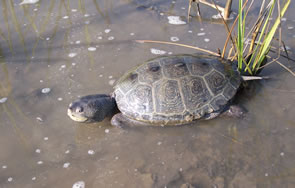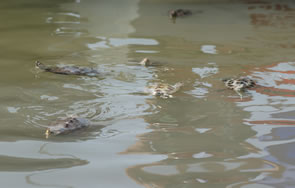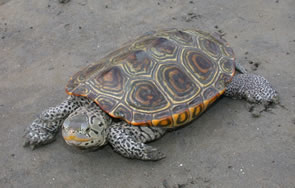
Diamondback Terrapin
Malaclemys terrapin
Description: The diamondback terrapin is most easily identified by the concentric ridges on the carapace (top of shell) and dark spots or streaks on the skin. Females are usually larger than males and measure 6 to 9 inches (15.2-22.9 cm) in carapace length while males measure 4 to 5.5 inches (10-14 cm).
Feeding/Diet: Diamondback terrapins are mostly carnivorous. They have been known to eat both snails and crabs. Vegetation that has been found in their stomachs may have been ingested accidentally.
Activity/Behavior: These aquatic turtles are very good swimmers. They frequently sunbathe on mudflats during the day. They have been known to burrow in mud at low tide and at night.
Habitat/Range: This species primarily inhabits coastal marshes and tidal creeks. While it can tolerate freshwater, it is primarily found in brackish or salt water.
Reproduction: Terrapins mate in the spring and the females lay their eggs in late spring or summer. Some females produce several clutches in one year. Eggs are normally buried in the sand, where they are frequently dug up and eaten by raccoons. Hatchling turtles may overwinter in the nest.
Miscellaneous: Diamondback terrapins are considered a special concern species by the state of North Carolina and listed as a threatened species by the World Conservation Union. Hunting of diamondback terrapins for their flesh depleted many coastal populations, but recent conservation efforts have contributed to its comeback in certain areas. Nevertheless, many turtles still drown each year in abandoned crab traps.
Visit Diamondback Terrapin Research at Kiawah Island, SC to learn more!
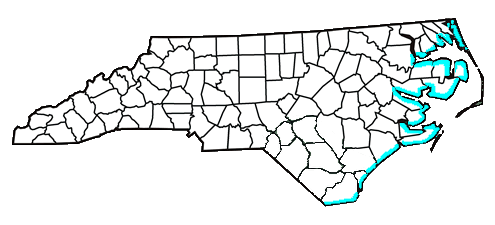
The shaded region represents the range of the diamondback terrapin in North Carolina.
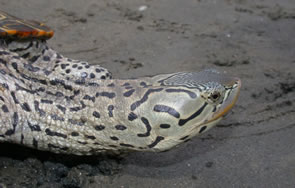
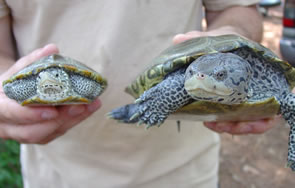
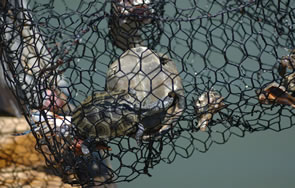
Lateral head and neck patterns of adult male.
Photo
by J. Willson
Terrapins are sexually dimorphic - a male is on the left and a female is on the right.
Photo
by A. Heupel
Male and female terrapin shell caught in crab trap.
Photo
by T. Luhring
